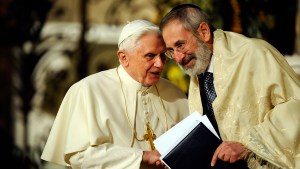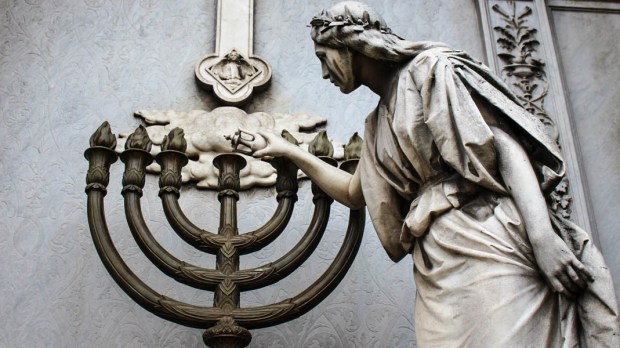Hanukkah is observed for eight nights and days, starting on the 25th day of Kislev according to the Hebrew calendar, which may occur at any time from late November to late December in the Gregorian calendar, meaning that some years (such as in 2018) the celebrations fall close to the beginning of Advent, and other years (such as in 2019) they fall closer to Christmas.
Since it is important for us Catholic/Christians to be aware of our Jewish heritage, (the entire Holy Family was Jewish, as were their relatives and friends) here are some facts about Hanukkah.
In our Catholic Bible in 1 Maccabees 4:59, we read: “Then Judas and his brothers and the entire congregation of Israel decreed that the days of dedication of the altar should be observed with joy and gladness on the anniversary every year for eight days from the 25th day of the month of Chislev.”
This is the description of Hanukkah, which commemorates the rededication of the Second Temple in Jerusalem at the time of the Maccabean Revolt against the Seleucid Empire. A supply of lamp oil sufficient for one day miraculously lasted for eight days.
In the New Testament, in John 10:22-35, we hear of the Feast of Dedication, also known as the Festival of Lights, which is Hanukkah. Jesus is celebrating it by saying, “… and scripture cannot be set aside …”
Interestingly, Hanukkah, which commemorates an event that occurred in 165 BC, is the only Jewish holiday not included in the Tanakh (the Jewish Scriptures, consisting of the Torah, the Prophets, and the Writings). There are several theories as to why this is. Some presume that since it marked an event of the 1st century, it was never written about in what became the Palestinian canon. Others maintain that the Jews did not want to cause any grief with their Roman rulers and so did not write about it.
Thus, the story appears only in the Catholic and Orthodox Bibles, as The Books of Maccabees are not in the King James version.
Here are some other Hanukkah facts:
- The festival is observed by lighting the candles of a candelabrum with nine branches, called a Hanukkah menorah (or hanukkiah). One candle is lighted to commemorate each of Hanakkah’s eight nights. The candles are lighted with a ninth, taller candle known as the servant candle, which diminishes itself in service to the other lights.
- Oily foods are a traditional part of the feast: Potato pancakes and jelly donuts are important because they represent the oil that burned for eight days.
- Cheese is a lesser-known Hanukkah tradition. This comes from the story from the Book of Judith, a beautiful Jewish widow, who seduces the Assyrian general, fills him with cheeses and wine, and waits until he passes out. Then she beheads him, empoweringthe Jewish army to conquer the Assyrians, saving Israel.
- Hanukkah falls on the same date every year if you use the Hebrew calendar. It falls on the 25th day of the month of Kislev (Chislev). The Hebrew calendar does not coincide with the Gregorian calendar, so Hanukkah can fall anywhere from late November to late December. Last year it began on December 12. In 2013 it began on Thanksgiving Day.
- Hanukkah can be spelled several different ways: Hanukah, Chanukah, Chanuka, and Chanucah.
- Hanukkah has become a major Jewish holiday because of Christmas. Up until the last part of the 19th century, Hanukkah was a minor holiday. It was nothing on the scale of Passover or Rosh Hashanah. It grew in popularity due to the incredibly popular Christmas season.
- Giving children coins during Hanukkah is an old tradition. It originally was the only gift children would receive. The custom came from Eastern Europe where teachers were given a bit of money as a “Thank you” for their hard work. In the 1920s it evolved in America into the chocolate “gelt.” Lofts Candy Corp. began producing the chocolate gold coins and their popularity quickly grew. They were called “gelt” (“gold” or “money” in Yiddish) by the Jewish people and that custom is still very popular.
- Latkes are a popular Eastern European food that is a staple of the Jewish holiday. The interesting thing about latkes is that they are not popular in Israel. In Israel, you will find plenty of jelly-donuts. Latkes (similar to potato pancakes) are cooked in animal fat, which was never in abundance in Israel. But in Eastern Europe it is used all of the time.
- Children also play a traditional Hanukkah game, betting with nuts or candy on the fall of a four-sided spinning top called a dreidel. Each side of the top is marked with a Hebrew letter, which stands for the phrase “A great miracle happened there” (or, in Israel, “A great miracle happened here”), describing the miracle of the lamps. The letters also stand for words indicating the game play — take none (of the nuts or candy in the central pot), take all, take half, put one in.
- Lastly, this year Hanukkah will end at sundown on December 10. Advent ends on Christmas Eve.

Read more:
Benedict XVI says theologian’s interpretation of his writing on Jews is “nonsense”

